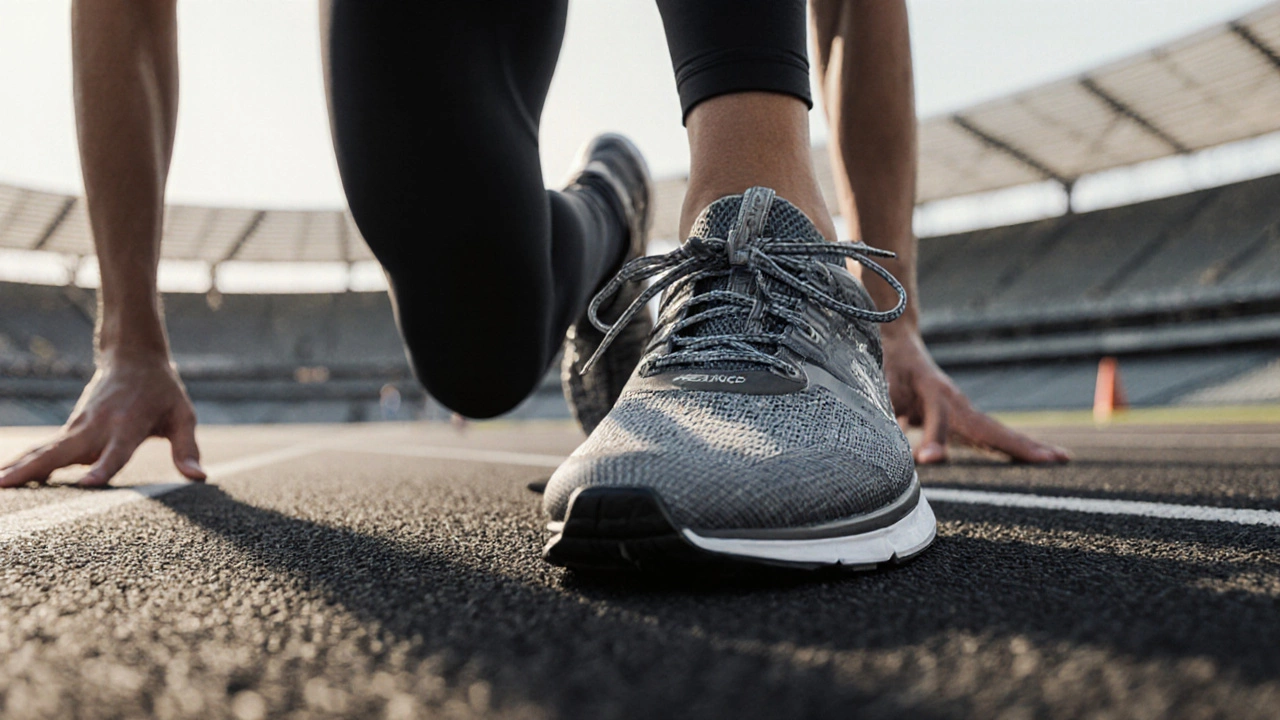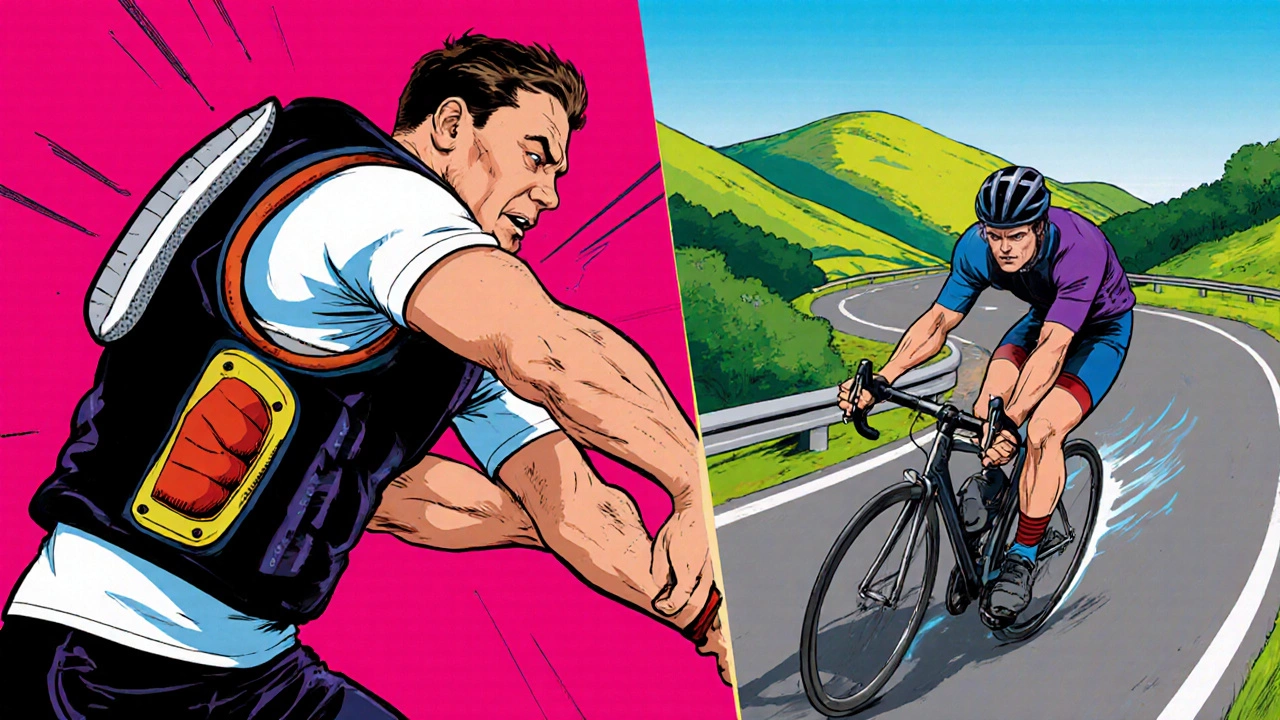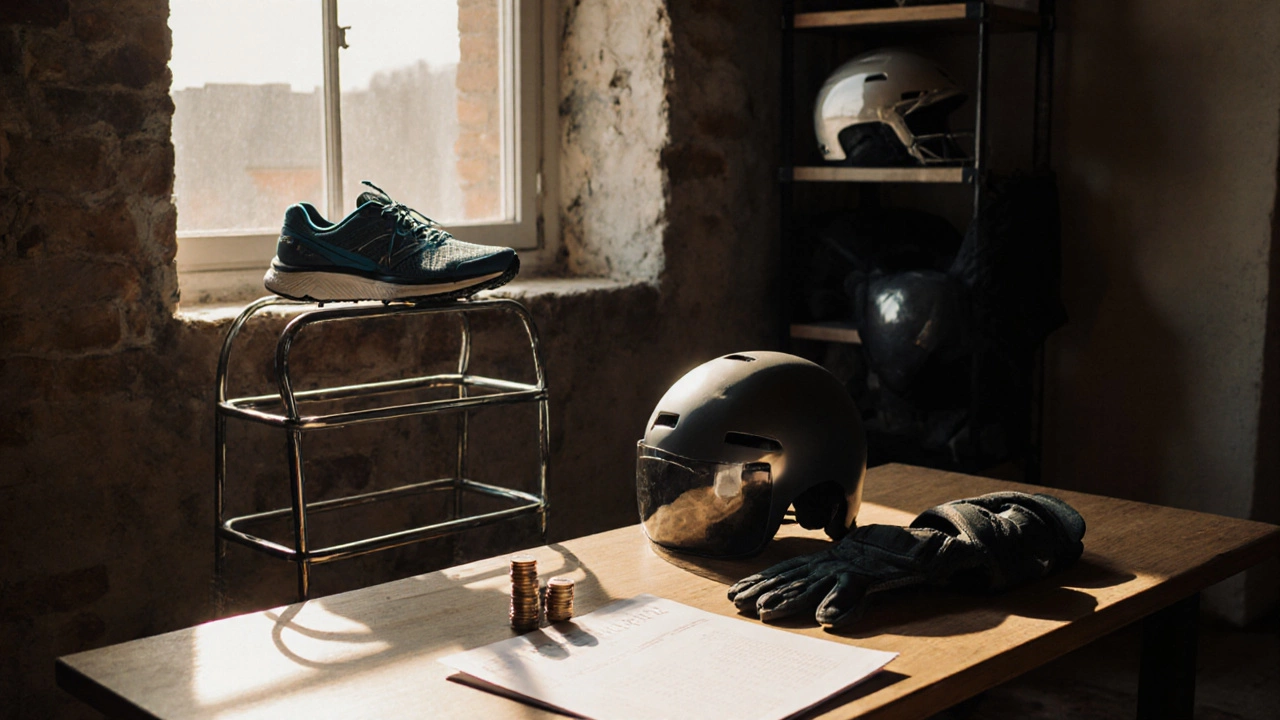Why Sports Gear Matters: Boost Performance, Stay Safe, and Save Money
 Oct, 11 2025
Oct, 11 2025
Sports Gear Replacement Calculator
Calculate when your sports equipment should be replaced based on usage patterns and understand the cost benefits of investing in durable gear.
Select Your Sport
Your Usage
Estimated Replacement Timeline
Pro Tip: Replace before gear loses its performance benefits and safety features.
Cost Savings Analysis
Ever wondered why athletes swear by the right sports gear before a game or a run? It’s not just about looking cool - the gear you wear can make the difference between a personal best and a painful setback. Below we break down the real reasons gear matters, how to pick the best pieces, and simple steps to keep them in top shape.
Gear as a Performance Engine
When you lace up a pair of high‑quality shoes or slip on a breathable jersey, you’re giving your body an extra edge. Performance refers to the level of output you can achieve in a sport, such as speed, power, or endurance isn’t magical - it’s heavily influenced by how well your equipment supports your muscles and joints. For example, a well‑fitted running shoe can improve stride efficiency by up to 10% according to a 2023 biomechanics study, meaning you waste less energy and can run farther.
- Lightweight materials reduce drag and fatigue.
- Ergonomic designs align with natural body mechanics.
- Specialized soles or grips translate power more efficiently to the ground.
Think of it like this: a cyclist using a carbon‑fiber frame feels the road’s vibrations less, so they can maintain a smoother cadence for longer. The same principle works across sports - the right gear helps your body move the way it was meant to.
Injury Prevention: Your First Line of Defense
Injury prevention is the set of measures taken to reduce the risk of physical harm during athletic activity isn’t a fancy buzzword; it’s a science backed by years of research. A 2022 meta‑analysis of 45 studies found that athletes wearing sport‑specific protective equipment suffered 30% fewer acute injuries on average.
Take a rugby player who dons a padded shoulder vest. The vest distributes impact forces across a larger area, lowering the chance of a cracked collarbone. Or a cyclist wearing a certified helmet - helmets reduce severe head trauma by roughly 70% in crashes. Even something as simple as compression socks can improve blood flow, cutting the odds of calf strains during long runs.
Skipping gear or choosing the wrong size often leads to “soft” injuries like blisters, joint strain, or chronic overuse pain. Those minor annoyances can snowball into days off the field, which nobody wants.

Comfort and Confidence: The Hidden Advantage
Comfort isn’t just a feel‑good factor; it directly impacts how long you can stay focused. Comfort describes how pleasant and unobtrusive equipment feels during use reduces distractions, letting you concentrate on technique instead of adjusting straps. A runner who constantly stops to fix shoes will never hit a new personal record.
Confidence also plays a psychological role. When you know your gear can handle a hard tackle or a steep descent, your mental game improves. That mental boost can translate into measurable performance gains - a 2019 sports psychology trial showed a 4% increase in sprint speed when athletes reported feeling “well‑equipped.”
Durability and Cost‑Effectiveness: Getting More Bang for Your Buck
Good gear is an investment. While premium items cost more upfront, their durability measures how well a product withstands wear, tear, and repeated use over time means you replace them less often. Over a three‑year period, a durable pair of cycling shoes can save you up to 40% compared to buying cheaper shoes every season.
Durability also ties into safety - worn‑out soles lose grip, cracked helmets no longer absorb impact, and frayed gloves can’t protect hands. So the cheapest option often ends up being the most expensive in the long run.
Choosing the Right Gear for Your Sport
Not all gear is created equal. Below we spotlight three common categories and what to look for in each.
Running Shoes
Running shoes are footwear designed specifically for running, featuring cushioning, support, and traction should match your foot strike pattern (neutral, overpronation, supination). Look for a midsole that offers responsive cushioning without being too soft - a balance that helps you stay quick while protecting joints.
Helmets
Whether you’re cycling, skateboarding, or playing rugby, a certified helmet is non‑negotiable. Check for a snug fit, a hard outer shell, and an EPS foam liner that compresses on impact. Modern helmets also incorporate ventilation channels to keep you cool during intense sessions.
Protective Pads & Gloves
From football shoulder pads to boxing hand wraps, the purpose is the same: distribute forces and protect vulnerable areas. Ensure pads have enough padding thickness to absorb shocks but remain flexible enough for range of motion. For gloves, look for a snug palm fit and reinforced stitching to avoid tearing.

Side‑by‑Side Comparison
| Gear Type | Protection Level | Comfort Rating | Durability (Years) | Typical Price (USD) |
|---|---|---|---|---|
| Running Shoes | Medium - cushions impact | High - breathable mesh | 2‑3 | 120‑180 |
| Bike Helmet | High - absorbs head trauma | Medium - snug fit | 5‑7 | 90‑150 |
| Protective Pads (e.g., rugby shoulder) | Very High - spreads impact | Medium - adds bulk | 3‑5 | 70‑130 |
Maintenance Tips to Extend Gear Life
Even the toughest gear needs love. Follow these quick habits:
- Air‑dry shoes and apparel instead of throwing them in the dryer - heat degrades materials.
- Wipe helmets with a damp cloth after each ride; avoid harsh chemicals.
- Inspect pads and gloves for cracks or loose stitching; replace before they fail.
- Store gear in a cool, dry place to prevent mold and material breakdown.
Regular checks not only keep your equipment safe but also give you confidence that everything will perform when you need it most.
Frequently Asked Questions
Do I really need specialized gear for casual exercise?
Yes. Even low‑intensity activities put stress on joints and muscles. Proper shoes, for instance, reduce impact forces and lower the risk of shin splints, while breathable fabric helps regulate temperature and avoid chafing.
How often should I replace my running shoes?
Most experts recommend a new pair every 300‑500 miles (≈480‑800km). After that, cushioning breaks down and you lose shock absorption, which can increase injury risk.
Can cheaper gear ever be as safe as premium options?
Safety‑certified standards (like CPSC for helmets) must be met regardless of price, but lower‑cost items often use lighter, less durable materials. They may protect you in a single incident but tend to wear out faster, reducing long‑term safety.
What’s the best way to clean my sports apparel?
Turn garments inside out, use a gentle detergent, and wash on a cold, short cycle. Avoid fabric softeners-they can clog the moisture‑wicking properties of technical fabrics.
Is there a universal size chart for sports gear?
Sizes vary by brand and category. Always check the specific manufacturer’s guide and, when possible, try gear on before buying. For online orders, measure your body parts (foot length, head circumference, chest) and match them to the brand’s chart.